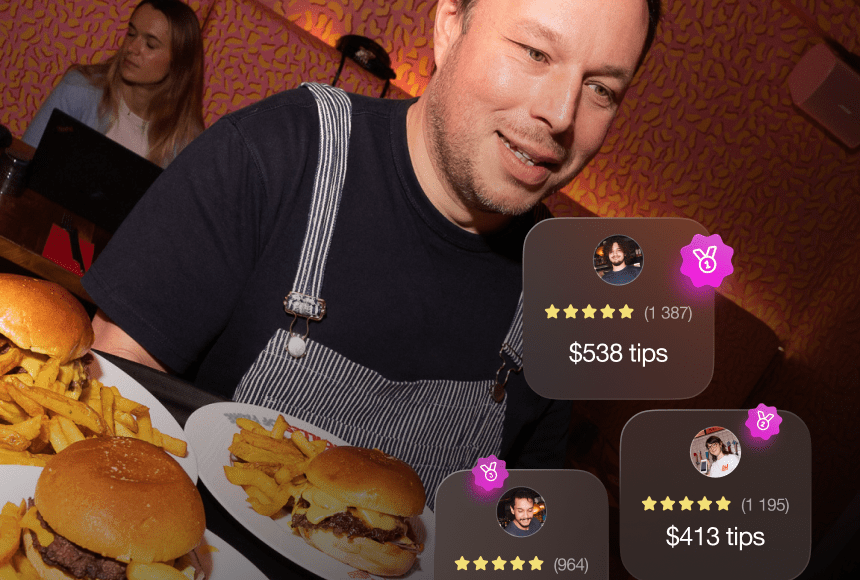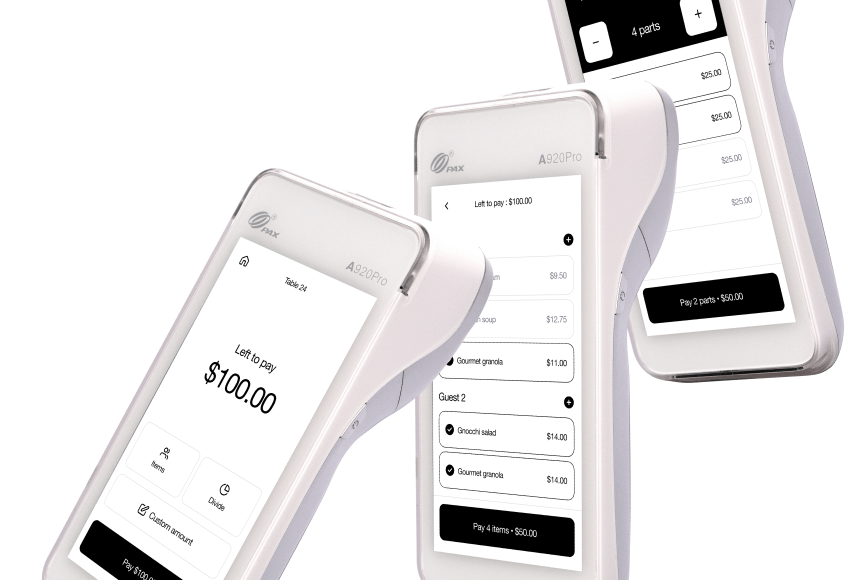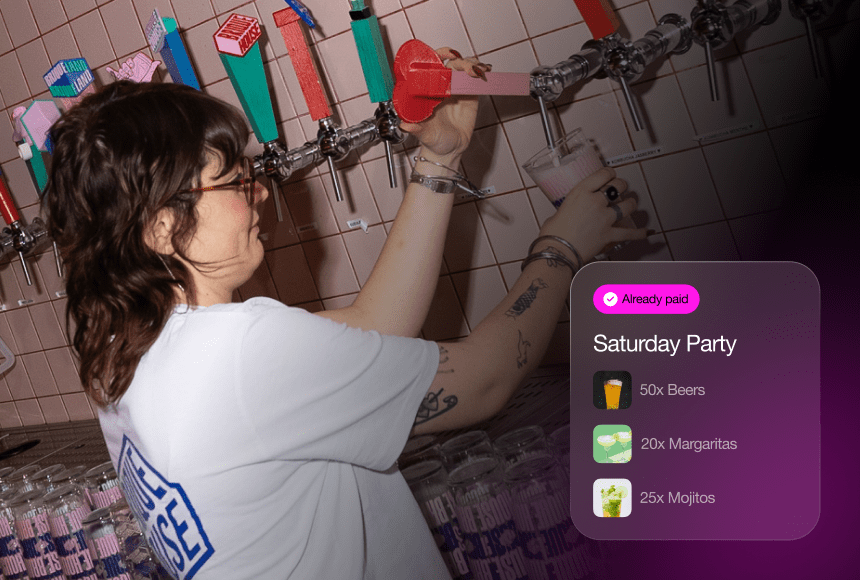
Rethinking Gratuities for a Happier, More Committed Team
Why Digital Tipping Matters in Today’s Restaurants
For restaurant owners, staff turnover can feel like a never-ending carousel: you invest time and money into recruiting and training, only to see servers or bartenders depart months later for what they believe is a better gig. Meanwhile, managers juggle daily tasks, trying to keep morale up and shifts covered. One emerging trend that’s quietly reshaping the game is the move toward digital tipping—collecting gratuities through apps, QR codes, or integrated POS systems rather than just cash or scribbled credit card slips.
According to Restaurant Business Online, more than half of diners say they’re open to new technology at restaurants, including digital tip solutions (source). This shift does more than streamline how money changes hands. It can profoundly impact staff retention, boosting morale, reducing stress, and making your team more likely to stay for the long haul. Below, we explore how digital gratuities can directly improve employee satisfaction—and help your restaurant succeed in a competitive market.
1. Providing Fairness and Transparency
The Old Way: End-of-night chaos. Servers in the corner counting out crumpled bills, hosts asking if they got their share, and bartenders re-checking bar tabs. With everyone working at a frenzied pace, mistakes (or suspicions) easily arise.
The Digital Difference:
- Real-time tracking: Each tip—whether left via app or QR code—flows automatically into your system, logging who earned what. This transparency reduces the possibility of accidental shorting, and staff can quickly verify their totals.
- Objective splits: If you pool tips, you can set clear rules—like distributing based on hours or role—and the system will follow them to the penny. No one has to worry about hidden biases or complicated mental math at 11 p.m.
- Open records: Most digital platforms let employees see their earnings. That open-book approach helps them trust the process—and trust management—much more.
By removing the guesswork, your team can focus on delivering great service rather than fretting over whether they’ll get their fair share at day’s end.
2. Reducing End-of-Shift Stress
We’ve all seen it: the last table departs, and staff want to go home. But first, they have to sift through tips, cross-check receipts, and confirm the night’s sales. It’s draining, especially when everyone is tired after a busy shift.
Switching to digital tips means employees walk away with less hassle:
- No more rummaging for small bills: Instead of pooling physical cash, the system does the math. Instant clarity means servers can head out or move on to cleanup tasks faster.
- Fewer arguments over mistakes: Because the software records every transaction, staff see the official totals. This eliminates tense disputes that can linger or damage camaraderie.
- More personal time: Minimizing prolonged tip count sessions helps staff feel valued. When they realize management respects their time, they’re more inclined to stay loyal.
A calm closing routine sets a positive tone, so employees end the night on a good note and come back tomorrow ready to serve with a smile.
3. Offering Consistency and Reliability
For front-of-house staff, tip income can vary widely from shift to shift. A Wednesday lunch might yield half the tips of a Saturday night dinner, even if the server’s performance is the same. That level of unpredictability contributes to job dissatisfaction and churn.
Digital tipping can soften these ups and downs in several ways:
- Tip pooling across multiple shifts: Some restaurants gather a portion of the entire week’s tips and distribute it evenly. A digital system makes that easier, eliminating the chaotic sum-up of multiple days’ worth of receipts.
- Suggested tip percentages: Many digital setups display “15%, 18%, 20%,” prompting diners to pick a standard figure rather than guess. This leads to more consistent tips for staff, evening out wild fluctuations.
- Greater convenience for diners: People find it easier to tap for a larger tip when not fumbling for spare change. According to the National Restaurant Association, streamlined digital prompts often boost overall gratuities (source).
When servers see that their earnings are more stable, they feel less pressure to seek out greener pastures at the restaurant down the street.
4. Improving Employee Morale with Quick Access to Earnings
Some digital platforms can provide near-instant access to tip income, or at least same-day confirmation of amounts. That immediate feedback can energize staff in ways an end-of-week envelope never could.
- Real-time updates: Employees might see how their tip totals are stacking up mid-shift, offering a motivational boost if they’re close to surpassing a personal record.
- Digital payouts: In some cases, staff can even cash out electronically without waiting for payday—handy if they have pressing expenses or simply appreciate immediate gratification.
- Reduced reliance on management “handouts”: Eliminating the need to physically distribute tips fosters independence. It also shortens the chain of potential errors or miscommunications.
By granting staff a modern, convenient way to view or receive their earnings, you create a sense of momentum and remove friction points—vital ingredients for retaining top talent.
5. Streamlining Staff Scheduling and Efficiency
Gratuities can sometimes distort staffing choices. A server might fight to cover Friday nights but balk at Tuesday mornings. Through digital tipping data, you gain a bigger picture of where and when high-tip opportunities lie. This insight informs shift assignments that better balance everyone’s opportunities, reducing resentment.
Furthermore, staff who see that management aims for fair scheduling—a mix of high- and low-traffic shifts, or clearly stated sign-up systems—will be more likely to stay on board. When all parties trust each other’s intentions, staff retention gets a healthy boost.
6. Aligning with a Tech-Savvy Workforce
The new generation of restaurant workers often expect technology to play a central role in their jobs. They use apps for everything from ridesharing to banking. Tying tips to a digital platform isn’t just a convenience for guests—it matches how staff want to engage with their earnings, too.
- Building a modern image: When employees see that your restaurant is forward-thinking, they feel proud to represent it. That pride can be a strong loyalty factor.
- Helping staff track finances: Younger employees in particular appreciate digital tools for budgeting. Automatic records of tips make it easier for them to manage personal money goals.
- Reducing friction with older systems: Instead of rummaging for cash or relying on manual tip logs, everyone interacts with a sleek interface that fits 2020s life.
In a competitive job market, featuring tech-savvy approaches can set your restaurant apart and attract talented staff who value efficiency.
7. Minimizing the Risk of Tip-Related Disputes
Staff retention often suffers when conflicts brew—especially if they revolve around tip fairness. Maybe a server suspects someone is pocketing a portion or claims a mistake in the calculation. These small controversies can pile up, eroding team unity.
- Digital oversight: With real-time digital logs, managers can see exactly how much each employee received. If someone raises a concern, you have a record to reference.
- Reduced theft worries: A locked-down electronic system means less chance of physical money “disappearing,” alleviating paranoia among staff.
- Fair splits for group tasks: If multiple people pitch in on a large party, the system can distribute the tip automatically, removing guesswork about who did the heavy lifting.
By removing the emotional charge from tip decisions, you create a more harmonious environment—one where employees are less inclined to depart in frustration.
8. Encouraging a Culture of Collaboration
When tips are easily trackable and shareable, staff begin to recognize that everyone’s efforts matter—especially if you opt for partial or total tip pooling. Line cooks, hosts, and servers all have a stake in providing excellent service, raising the overall level of synergy.
- Better cross-team relationships: A straightforward digital system helps staff see how their collective performance influences everyone’s take-home pay, motivating them to support each other.
- Rewarding helpfulness: If your policy includes giving a portion of tips to back-of-house, those employees realize they benefit directly from consistent, high-quality output. They’re more likely to go the extra mile, boosting overall restaurant morale.
When staff feel part of a cohesive team, turnover typically drops. Digital tipping can be the glue that ties these collaborative efforts together.
9. Providing Enhanced Data for Management Insights
Most digital tip platforms come equipped with analytics that can be gold for managers. For example, you might notice that tips spike during certain promotions or that a particular server consistently brings in above-average gratuities, no matter the night. How does that connect to staff retention?
- Targeted improvements: If you see that a team member’s tips lag behind peers, you can coach them specifically on upselling or table presence—helping them feel supported rather than left to flounder.
- Incentive planning: You might create small bonuses or “Server of the Month” recognitions based on tip stats, fueling friendly competition that keeps staff engaged.
- Shift optimization: With data, you can ensure top performers and promising newcomers get prime shifts, balancing earnings opportunities across your workforce.
Armed with real data, managers become better leaders, building a positive environment where employees feel recognized and rewarded based on tangible metrics.
10. Empowering Staff to Stay Long-Term
At the end of the day, staff retention often hinges on whether your employees feel respected, fairly compensated, and satisfied with their day-to-day experiences. Digital tips amplify each of these factors:
- Respect: Transparent, automated splits convey you value employees’ time and want to ensure fairness.
- Fair compensation: Easy tipping prompts can raise total earnings, while clear distribution rules reduce payroll drama and keep staff from looking elsewhere.
- Smooth day-to-day experiences: The less friction at checkout, the less tension at closing time. That positivity radiates into a better overall workplace vibe.
By removing the typical frustrations around who gets what, you nurture a trusting atmosphere. And trust often translates into lower turnover, deeper institutional knowledge, and stronger guest satisfaction scores in the long run.
Where to Begin?
If you’re convinced that digital gratuities could improve staff retention in your restaurant, the next step is implementation:
- Audit your current setup: Does your POS integrate with a digital tipping feature? Could an external platform sync seamlessly with your existing payment tools?
- Communicate the shift: Train staff on how the system works, from how tips are recorded to how they can view earnings. Transparency here is key.
- Offer a fallback for late adopters: Some older employees—or older guests—might still prefer the old ways. Keep a partial physical option, at least at first, to ease the transition.
Monitor your new system carefully, gathering feedback from staff on whether they feel it’s truly addressing the issues they had with manual tipping. Over time, refine the approach—like adjusting tip pooling rules or exploring advanced analytics that reveal even more about your restaurant’s performance and staff engagement.
Looking Ahead to a More Loyal Team
In a sector known for high turnover, even small improvements in employee satisfaction can pay major dividends. Digital tips might look like a back-office convenience at first glance, but they can be a frontline tool in shaping how your servers, bartenders, and line cooks experience their work. By cutting out confusion, clarifying how tips are split, and harnessing modern technology to handle old-school tasks, you’re sending a powerful message that your restaurant invests in fairness and innovation.
That message resonates with staff who’ve grown tired of end-of-night squabbles or shady tip jars. And it resonates with forward-thinking diners who appreciate a frictionless, intuitive way to show gratitude. All told, the result can be a more harmonious workplace and a workforce that’s less likely to bolt at the next opportunity. In an era where skilled, passionate employees are precious, digital tips might just be your most underutilized retention strategy.
Find out more today
Drop us your details below and we’ll reach out within the next 24h
More tips means a better service.
More tips mean better guest-experience, and better staff-retention.



